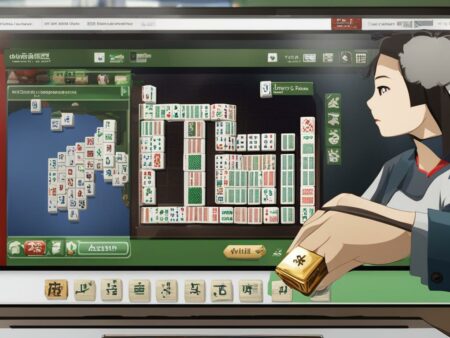Are you a fan of traditional board games and interested in learning about the rules of Mahjong for three players? Look no further! In this article, I will provide a comprehensive guide to the mahjong rules for 3 players, covering everything from gameplay mechanics to special hands and scoring systems.
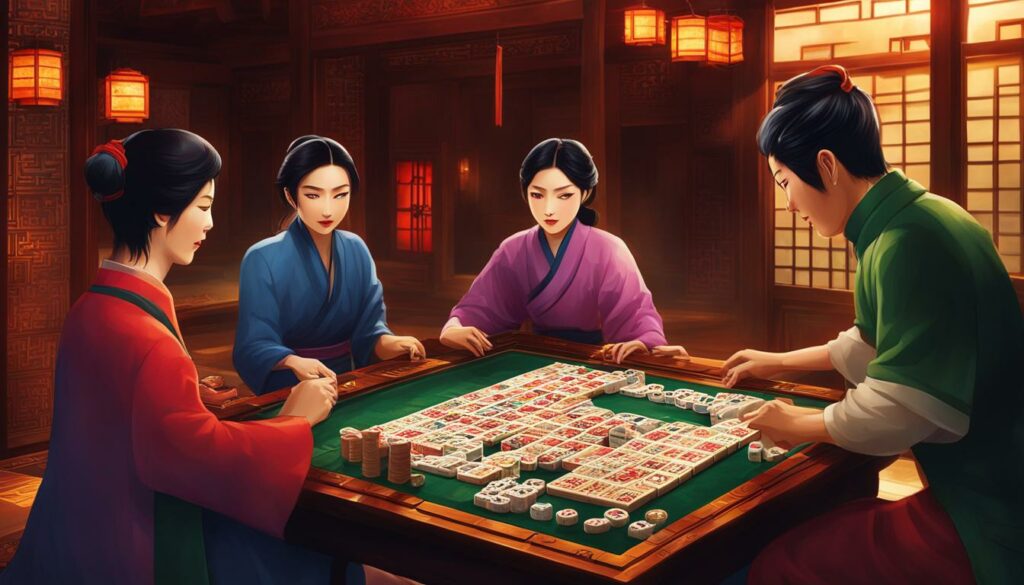
For those unfamiliar with Mahjong, it is a tile-based game that originated in ancient China and requires strategic thinking, luck, and calculation to win. In Mahjong 3 Player Rules, the objective is to collect a winning hand by forming specific combinations of tiles.
Before diving into gameplay mechanics, it’s important to understand the game’s setup process. This includes the distribution of tiles and the arrangement of tiles in a specific layout. Additionally, unique special rules are introduced in Mahjong 3 Player Rules to maintain balance and fairness with only three players.
Understanding the nuances of Mahjong 3 Player Rules and adapting to its modified rules and strategies can enhance the overall gameplay experience. So, let’s dive in and explore the world of three-player Mahjong!
Mahjong Overview
As a brief explanation, Mahjong is a traditional Chinese tile-based game that requires strategic thinking, luck, and calculation. The game is played with a set of 144 tiles, with each tile bearing a unique symbol or character, divided into three categories: circles, bamboo, and characters. Additionally, there are three sets of tiles numbered one to nine in each category, adding up to 36 tiles for each suit.
The game originated in China and gained popularity in the 1920s in the United States, spreading to the rest of the world in subsequent years. The game has since undergone various modifications to suit regional preferences and has developed into different variations. However, the core gameplay mechanics of Mahjong remain relatively the same.
Mahjong is a game that challenges players to make strategic decisions based on their luck and calculation skills, requiring them to balance risk and reward. The game is often compared to poker or chess due to its emphasis on strategy and decision-making.
Each round of Mahjong is played with four players, and the objective is to collect a winning hand by forming sets of tiles or sequences. The player with the highest score at the end of the game wins. However, in Mahjong 3 Player Rules, as the name suggests, only three players participate in the game.
The objective of Mahjong 3 Player Rules
As mentioned previously, the main objective in Mahjong 3 Player Rules is to collect a winning hand by forming certain combinations of tiles.
These combinations, also known as “sets,” can consist of either three or four tiles of the same suit or a run of three consecutive tiles of the same suit.
Once a player has formed a winning hand, they must declare it to the other players and reveal their tiles. The player with the highest score at the end of the game is the winner.
The highest score is determined by a combination of factors such as the value of the winning hand, any bonus tiles, and additional conditions such as whether the player won by self-draw or by discarding the winning tile.
It’s important to note that not all sets are worth the same amount of points. Some sets, such as those composed entirely of honor tiles or terminal tiles, are worth more points than others.
There are also different ways to win, such as drawing the winning tile yourself or stealing a discarded tile from another player to form a winning hand.
Ultimately, the goal is to collect the highest-scoring winning hand possible and emerge as the game’s victor.
Mahjong 3 Player Rules Setup
The setup process for Mahjong 3 Player Rules is crucial to ensure the game runs smoothly and fairly. The first step is to shuffle the tiles thoroughly and create a wall with 84 tiles. Then, each player takes turns rolling the dice to determine the starting dealer.
The dealer then distributes the tiles in an anti-clockwise direction, starting with 26 tiles for each player. After the tile distribution, players should organize their tiles according to their suits and values to form a hand. The remaining tiles not used to form hands will remain in the wall.
Once the tile distribution is complete, the game begins with the dealer breaking the wall and distributing four tiles to each player. The remaining tiles are arranged to form a square in the center of the table, known as the pool.
The tile layout in Mahjong 3 Player Rules can vary depending on the house rules or player preferences. However, it typically consists of two layers, each containing eight tiles arranged in a horizontal line. The bottom layer is the longest, while the top layer is shorter and placed slightly to the right of the bottom layer.
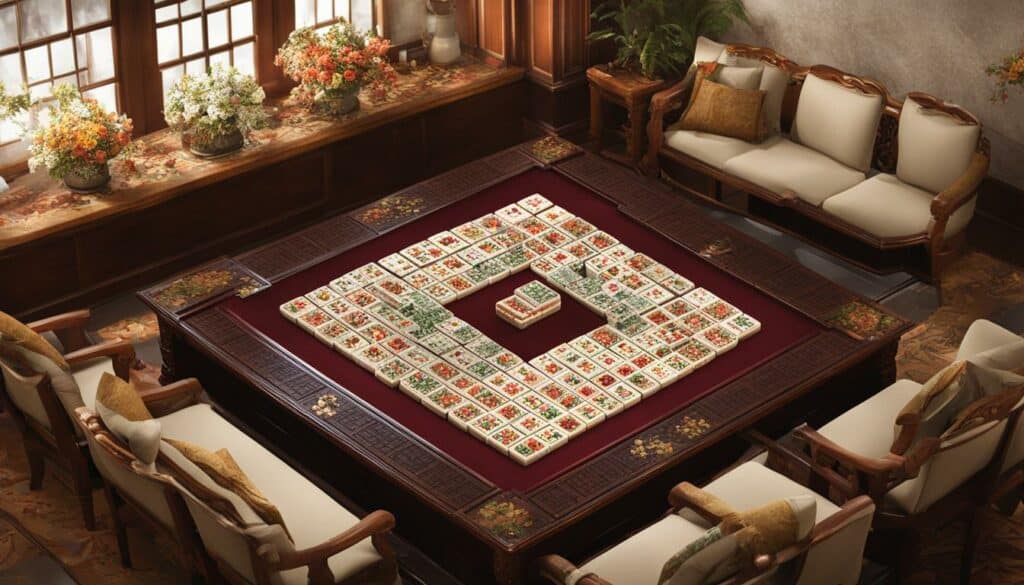
The tile layout in Mahjong 3 Player Rules is not just for aesthetics but serves a functional purpose. It allows players to easily access tiles in the pool and keeps the discarded tiles separate from the rest of the tiles in the game.
Gameplay in Mahjong 3 Player Rules
Understanding the gameplay mechanics is crucial to mastering Mahjong 3 Player Rules. Let’s take a closer look at the turn structure, tile actions, and combinations that make up the core of the game.
Turn Structure
Turns in Mahjong 3 Player Rules rotate in a counterclockwise direction, starting with the player to the right of the dealer. Each turn consists of the following steps:
- Draw a tile from the wall or the discard pile.
- Choose a tile to discard from your hand.
- Declare any actions or combinations you wish to make with your tiles.
- Discard the tile face-up.
Note that players only draw one tile per turn and must discard a tile before declaring any actions or combinations.
Drawing a Tile
Players can draw a tile from either the wall or the discard pile. The wall is a stack of tiles arranged facedown in a specific layout, and players can draw the top tile from the wall. The discard pile, on the other hand, consists of tiles discarded by previous players during their turns.
However, there are some restrictions on when and how players can draw tiles:
- Players cannot draw a tile if they have already declared an action or combination with their current tiles.
- If a player draws a tile from the discard pile, they must show it to the other players before adding it to their hand.
- If a player draws a bonus tile, they must keep it in their hand until they can declare a winning hand.
Discarding a Tile
After drawing a tile, players must choose one tile from their hand to discard face-up. Other players can claim the discarded tile to form a combination, so you should be mindful of what tiles you discard.
Similarly to drawing tiles, there are some restrictions on discarding tiles:
- Players cannot discard a tile if they have already declared an action or combination with their current tiles.
- Players cannot discard a tile they just drew from the wall unless it completes a winning hand.
Tile Actions and Combinations
One of the most exciting aspects of Mahjong 3 Player Rules is the variety of tile actions and combinations players can make. Here are some of the most common ones:
| Action/Combination | Description |
|---|---|
| Peng | Declare three of a kind using two matching tiles from your hand and one matching tile from the discard pile. |
| Gang | Declare four of a kind using three matching tiles from your hand and one matching tile from the discard pile or the wall. |
| Chi | Declare a sequence of three tiles in numerical order taken from the discard pile. |
| Winning Hand | Declare a combination of tiles that meets the winning conditions and earns the most points. |
Players can also declare special hands, such as Seven Pairs, which consists of seven pairs of tiles, or Thirteen Orphans, which consists of one of each of the honor and terminal tiles and one extra tile.
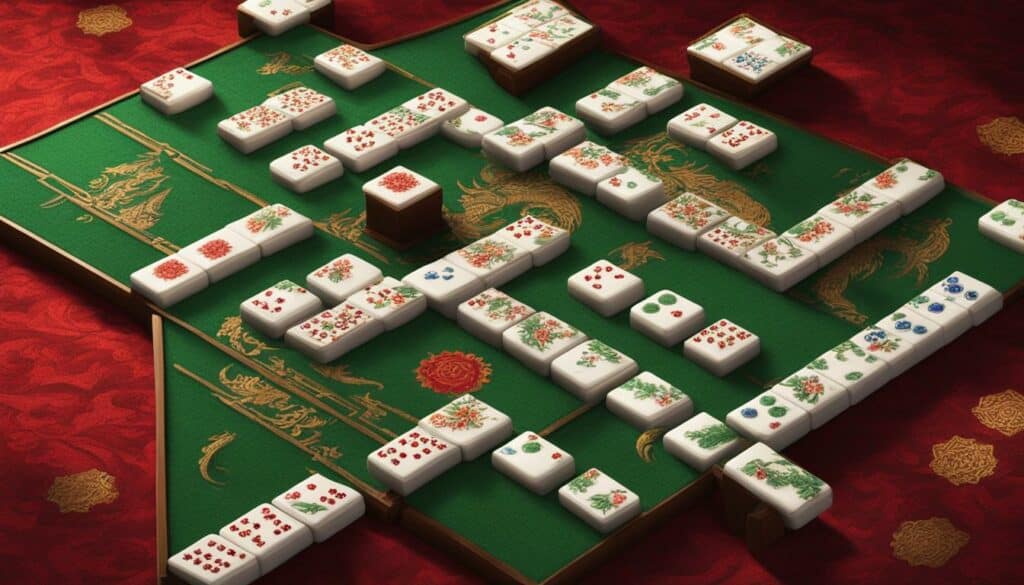
With these gameplay mechanics in mind, you’re ready to dive into the exciting world of Mahjong 3 Player Rules. Good luck!
Special Rules for 3 Players
In Mahjong, balancing and fairness among all players is important. This becomes even more crucial when playing with only three players. To ensure a level playing field, Mahjong 3 Player Rules comes with special rules, including:
- Limitations on tile exchange: Players are restricted in how many tiles they can exchange with the wall when they discard a tile. This is to prevent any one player from having an unfair advantage.
- Restrictions on game actions: Certain actions, such as calling for a Chow or Pung, are limited to ensure that all players have an equal opportunity to form winning hands.
These rules may take some time, but they ultimately ensure a fair and balanced gameplay experience for all players.
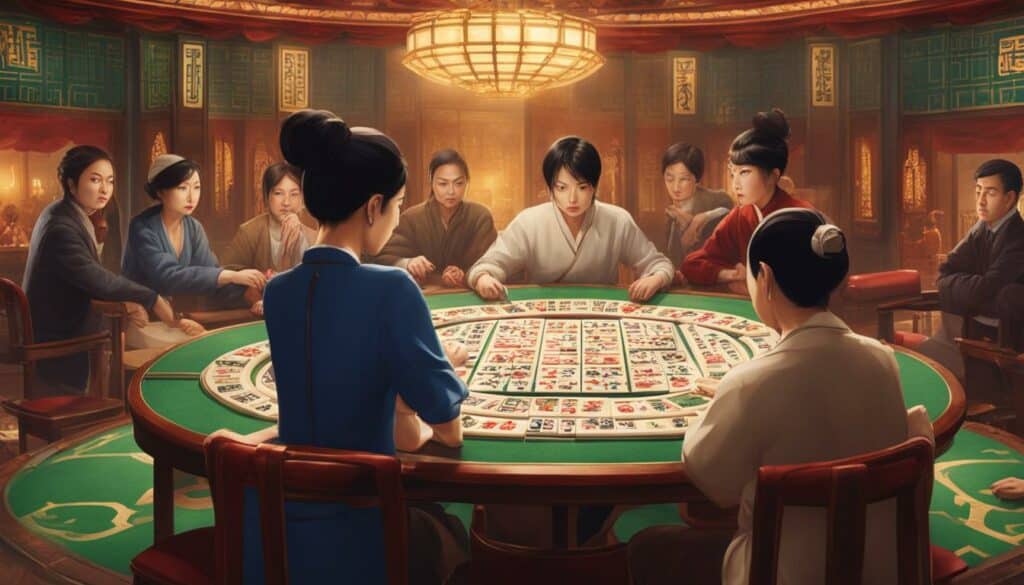
“Playing Mahjong with only three players can be challenging, but it’s also an opportunity to adapt to new rules and strategies.”
Adapting to Modified Rules
As with any game, adjusting to the modified rules of Mahjong 3 Player Rules can take some time. However, players can use this as an opportunity to develop new strategies and enhance their gameplay experience. By understanding and embracing the unique rules of three-player Mahjong, players can continue to enjoy this classic game with friends and family.
Scoring System and Special Hands
In Mahjong 3 Player Rules, scoring is an essential aspect of gameplay. Points are awarded based on the value of the winning hand and additional factors such as bonus tiles or conditions. Let’s take a closer look at the scoring system and special hands:
Points
Points in Mahjong 3 Player Rules are determined by the value of the winning hand, which is based on the combinations of tiles collected. The more valuable the combination, the higher the points awarded. The scoring system can vary depending on the region, but generally, the winner will earn points from all players, with the loser losing the same amount.
Bonus Tiles
In Mahjong 3 Player Rules, bonus tiles can increase the points a player earns. These include the Flower and Season tiles, which can be paired to earn bonus points, and the prevailing wind and seat wind tiles, which also provide bonus points.
Special Hands
Special hands in Mahjong 3 Player Rules are specific combinations of tiles that can earn a player additional points. These combinations can vary depending on the region, but some common examples include:
- Mahjong: winning with a complete 14-tile hand
- Dragon Pung: collecting three of the same dragon tiles
- Winds (Round Wind and Seat Wind) Pung: collecting three of the same wind tiles corresponding to the current round or player’s position
- Concealed Hand: winning without having to call a single tile from another player
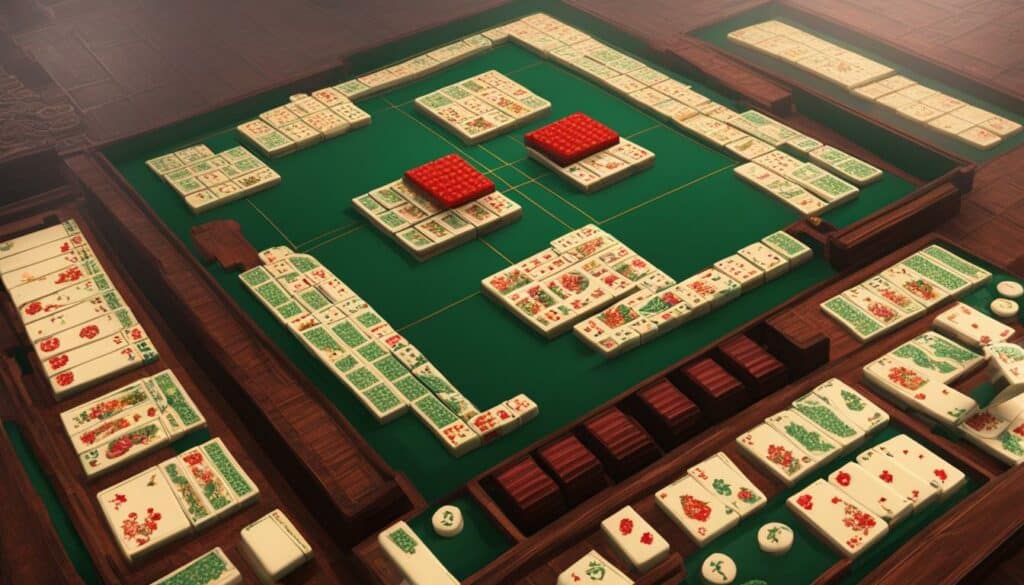
Incorporating bonus tiles and special hands into gameplay adds a layer of strategy and excitement to Mahjong 3 Player Rules. Players must balance the value of their tile combinations with the potential for bonus points to maximize their score, making every turn crucial to their success.
Conclusion
Adapting to the modified rules and strategies unique to three-player Mahjong can enhance your gameplay experience. Understanding the rules is crucial to enjoy and play the game fully. It is important to remember that luck plays a significant role in the game, but strategic thinking and calculation can give you an edge.
Experiment with different strategies to find what works best for you. With only three players, the game has a different dynamic than traditional four-player Mahjong. Take advantage of the particular hands and scoring system to boost your points.
Remember, the ultimate goal is to have fun. Whether you are a beginner or an experienced player, three-player Mahjong offers a unique and exciting experience. Enjoy the challenge and embrace the modified rules to immerse yourself in the game fully.


